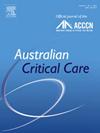有针对性的温度管理以尽量减少心脏骤停后继发性脑损伤:系统综述
IF 2.7
3区 医学
Q2 CRITICAL CARE MEDICINE
引用次数: 0
摘要
从院内或院外心脏骤停(CA)恢复的患者需要干预恢复,特别是减少继发性脑损伤。目标温度管理(TTM)是对神经恢复影响最大的干预措施。目的本系统综述的目的是描述成人CA患者当前的TTM及其对功能结局的影响。本系统评价是根据乔安娜布里格斯研究所指南和系统评价和荟萃分析报告指南的首选报告项目在2024年3月至5月期间制定的。建立了资格标准。我们系统地回顾了纳入接受TTM治疗的成年CA患者的研究,并报告了功能结果。检索策略应用于以下数据库:Medline和CINAHL Ultimate, Cochrane Central Register of Controlled Trials,通过EBSCO和Scopus。使用Rayyan软件进行最后的提取和选择。结果检索到的研究强调了以下神经保护干预措施:使用连续温度反馈系统(用膀胱、食管或静脉探头连续监测温度)进行温度诱导;预诱导时间在390 min (6.5 h) ~ 12 h之间,诱导时间大于440 min (7.3 h);根据患者特点将目标温度设定在32℃~ 37.5℃之间,维持时间为24 ~ 48 h;给予镇静剂、退烧药和神经肌肉阻滞剂;以及仅在复温阶段后评估神经预后,使用脑功能类别和修正兰金评分等量表。结论在这一领域的持续研究和投资是值得鼓励的,特别是在完善准确的神经预后工具和评估量表方面。RegistrationPROSPERO注册ID: CRD42024588646。本文章由计算机程序翻译,如有差异,请以英文原文为准。
Targeted temperature management to minimise secondary brain injury after cardiac arrest: A systematic review
Background
A patient recovering from an in-hospital or out-of-hospital cardiac arrest (CA) requires interventions for recovery, particularly for minimising secondary brain injury. Targeted temperature management (TTM) is the intervention with the greatest impact on neurological recovery.
Aim
The aim of this systematic review was to describe current TTM in adult CA patients and its impact on functional outcomes.
Methods
This systematic review was developed between March and May 2024 according to the Joanna Briggs Institute guidelines and the Preferred Reporting Items for Systematic Reviews and Meta-Analyses guidelines for reporting. Eligibility criteria were established. We systematically reviewed studies enrolling adult CA patients who received TTM and reported functional outcomes. The search strategy was applied in the following databases: Medline and CINAHL Ultimate, the Cochrane Central Register of Controlled Trials, through EBSCO, and Scopus. The Rayyan software was used for the final extraction and selection.
Results
The studies retrieved highlight the following interventions for neuroprotection: the use of a continuous temperature feedback system (continuous temperature monitoring with vesical, oesophageal, or parenthetic probes) for temperature induction; conducting a preinduction time between 390 min (6.5 h) and 12 h and an induction time greater than 440 min (7.3 h); setting the target temperature between 32 °C and 37.5 °C according to the patient's characteristics for a maintenance period between 24 and 48 h; the administration of sedatives, antipyretics, and neuromuscular blockers; and the assessment of neurological prognosis only after the rewarming phase, using scales such as the Cerebral Performance Category and the Modified Rankin Score.
Conclusions
Continuous research and investment in this area of knowledge are highly encouraged, particularly in terms of refining accurate neurological prognostic tools and assessment scales.
Registration
PROSPERO Registration ID: CRD42024588646.
求助全文
通过发布文献求助,成功后即可免费获取论文全文。
去求助
来源期刊

Australian Critical Care
NURSING-NURSING
CiteScore
4.90
自引率
9.10%
发文量
148
审稿时长
>12 weeks
期刊介绍:
Australian Critical Care is the official journal of the Australian College of Critical Care Nurses (ACCCN). It is a bi-monthly peer-reviewed journal, providing clinically relevant research, reviews and articles of interest to the critical care community. Australian Critical Care publishes peer-reviewed scholarly papers that report research findings, research-based reviews, discussion papers and commentaries which are of interest to an international readership of critical care practitioners, educators, administrators and researchers. Interprofessional articles are welcomed.
 求助内容:
求助内容: 应助结果提醒方式:
应助结果提醒方式:


